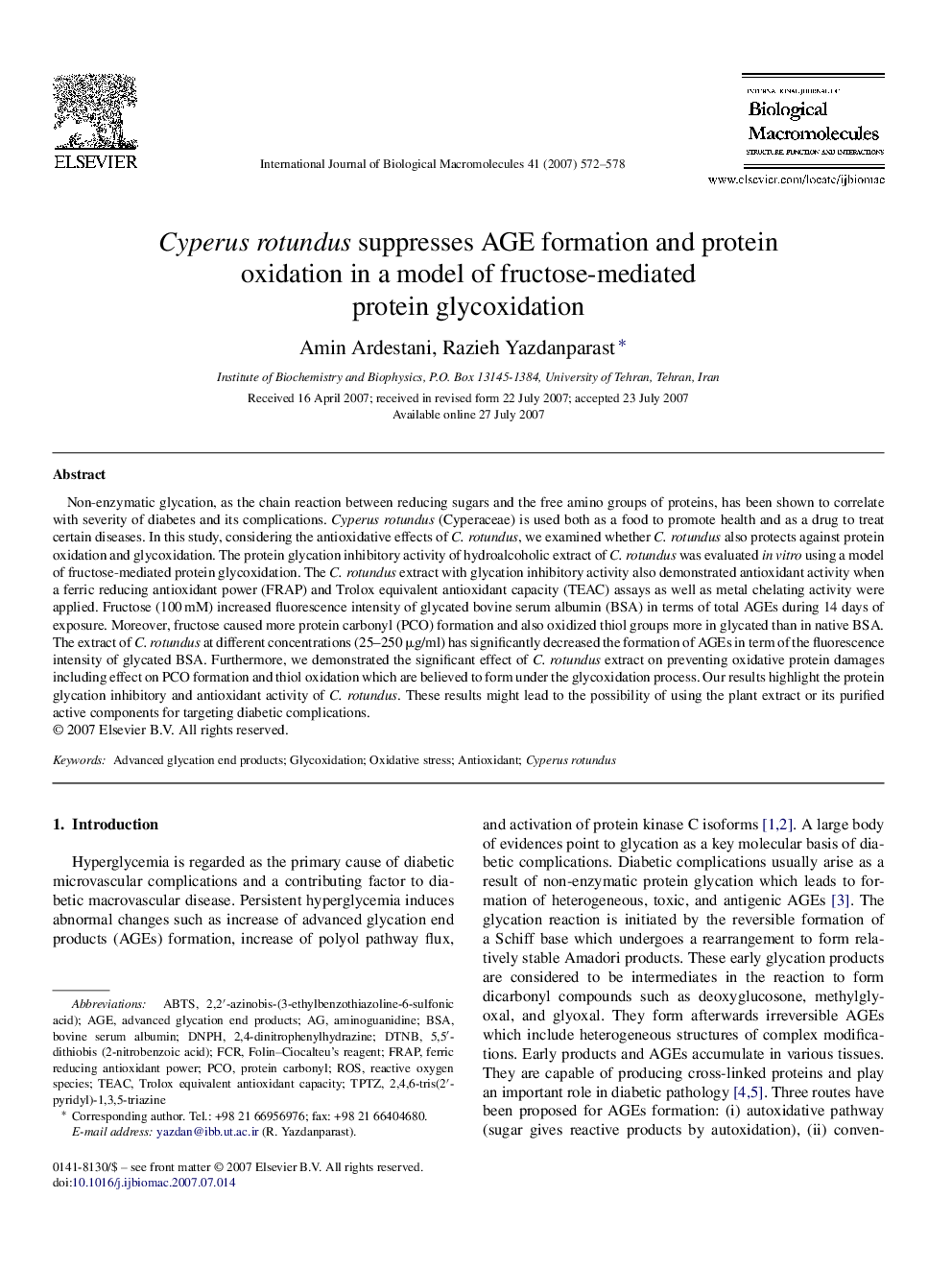| Article ID | Journal | Published Year | Pages | File Type |
|---|---|---|---|---|
| 1988243 | International Journal of Biological Macromolecules | 2007 | 7 Pages |
Non-enzymatic glycation, as the chain reaction between reducing sugars and the free amino groups of proteins, has been shown to correlate with severity of diabetes and its complications. Cyperus rotundus (Cyperaceae) is used both as a food to promote health and as a drug to treat certain diseases. In this study, considering the antioxidative effects of C. rotundus, we examined whether C. rotundus also protects against protein oxidation and glycoxidation. The protein glycation inhibitory activity of hydroalcoholic extract of C. rotundus was evaluated in vitro using a model of fructose-mediated protein glycoxidation. The C. rotundus extract with glycation inhibitory activity also demonstrated antioxidant activity when a ferric reducing antioxidant power (FRAP) and Trolox equivalent antioxidant capacity (TEAC) assays as well as metal chelating activity were applied. Fructose (100 mM) increased fluorescence intensity of glycated bovine serum albumin (BSA) in terms of total AGEs during 14 days of exposure. Moreover, fructose caused more protein carbonyl (PCO) formation and also oxidized thiol groups more in glycated than in native BSA. The extract of C. rotundus at different concentrations (25–250 μg/ml) has significantly decreased the formation of AGEs in term of the fluorescence intensity of glycated BSA. Furthermore, we demonstrated the significant effect of C. rotundus extract on preventing oxidative protein damages including effect on PCO formation and thiol oxidation which are believed to form under the glycoxidation process. Our results highlight the protein glycation inhibitory and antioxidant activity of C. rotundus. These results might lead to the possibility of using the plant extract or its purified active components for targeting diabetic complications.
